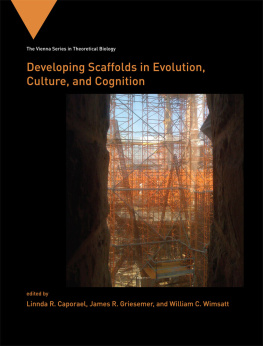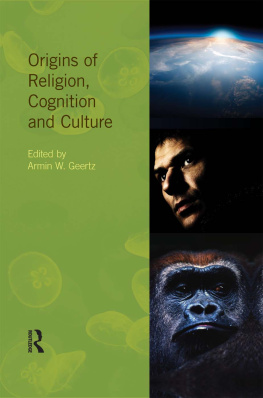Series Foreword
Biology is becoming the leading science in this century. As in all other sciences, progress in biology depends on interactions between empirical research, theory building, and modeling. But whereas the techniques and methods of descriptive and experimental biology have evolved dramatically in recent years, generating a flood of highly detailed empirical data, the integration of these results into useful theoretical frameworks has lagged behind. Driven largely by pragmatic and technical considerations, research in biology continues to be less guided by theory than seems indicated. By promoting the formulation and discussion of new theoretical concepts in the biosciences, this series intends to help fill the gaps in our understanding of some of the major open questions of biology, such as the origin and organization of organismal form, the relationship between development and evolution, and the biological bases of cognition and mind.
Theoretical biology has important roots in the experimental biology movement of early-twentieth-century Vienna. Paul Weiss and Ludwig von Bertalanffy were among the first to use the term theoretical biology in a modern scientific context. In their understanding the subject was not limited to mathematical formalization, as is often the case today, but extended to the conceptual problems and foundations of biology. It is this commitment to a comprehensive, cross-disciplinary integration of theoretical concepts that the present series intends to emphasize. Today theoretical biology has genetic, developmental, and evolutionary components, the central connective themes in modern biology, but also includes relevant aspects of computational biology, semiotics, and cognition research, and extends to the naturalistic philosophy of sciences.
The Vienna Series grew out of theory-oriented workshops, organized by the Konrad Lorenz Institute for Evolution and Cognition Research (KLI), an international center for advanced study closely associated with the University of Vienna. The KLI fosters research projects, workshops, archives, book projects, and the journal Biological Theory, all devoted to aspects of theoretical biology, with an emphasis on integrating the developmental, evolutionary, and cognitive sciences. The series editors welcome suggestions for book projects in these fields.
Gerd B. Mller, University of Vienna and KLI
Gnter P. Wagner, Yale University and KLI
Werner Callebaut, Hasselt University and KLI
Preface
This book is about scaffolding, a concept that is becoming widespread in use across disciplines. Its contexts and referents vary, as is likely to happen with metaphors, but we saw common threads in these diverse applications. For us, the coeditors of this volume, scaffolding seemed to be what we were doing for each others theoretical perspectives on reproduction, development, sociality, and evolution. We shared an early, and formative, experience in Science and Technology Studies, which in its early days brought together philosophers (including agents provocateur Werner Callebaut and psychologist Donald T. Campbell [19161996]), natural and social scientists, historians, and others of similar ilk. The shared link was not so much in our disciplines but in the reflexive way of looking at them. Those efforts continued in meetings of the International Society for the History, Philosophy and Sociology of Biology and a shared discussion over the years that eventually led to this volume.
With the generous support of Gerd Mller and Werner Callebaut of the Konrad Lorenz Institute for Evolution and Cognition Research (KLI), Altenberg, we brought together perhaps the broadest range of scholars ever hosted by the KLI. Their interests ranged from the tissues at the boundaries of nonlife and life to the history of synthetic dyes in nineteenth-century Europe coupled with the rise of German research universities to life-span development of the brain to a view of cognition leaving traces in the virtual world of the Internet. We sought phenomena and perspectives that integrate evolution, cognition, culture, and technology across generations, ontogenies, intellectual histories, and wherever else scaffolding is essential to the production of structures and processes, many of which themselves serve also to scaffold. We were interested in juxtapositions, in granularity of phenomena, and resonances that spoke to the foundational concepts of reproduction, repeated assemblies, core groupings, and generative entrenchment. In other words, what emergent understandings might lie latent in the collective enterprise?
A central goal for this edited book is to make our own process of discovery and analysis as visible as possible for readers so that they are able to understand and undertake similar analyses in their own work that can extend or challenge ours. Additionally, we wanted to introduce scaffolding as a complementary alternative to traditional neo-Darwinism, which offers few theoretical tools for culture and cognition. We have hoped thereby to extend the range of and enrich a broadly Darwinian perspective on humankind and our products. Because development, broadly conceived, appeared as a central concept among our contributors, and because our emphasis is on developing new ideas about scaffolding that are still very much a work in progress, the title we adopted for the MIT Press volume is Developing Scaffolds in Evolution, Culture, and Cognition. Thus, this volume is no ordinary compilation of workshop papers. It is the framing, collection of data, analysis, and report of our research project laid bare.
Our efforts in this volume have been scaffolded substantially by Werner Callebaut, scientific director of the KLI. Werner, who has been a long-time friend to each of us and comes closer than any of us in matching the range of this volume. His philosophical and institutional leadership on the integration of evolution, cognition, and culture research, including exploration of new movements in evodevo, modularity in complex systems, and naturalistic evolutionary approaches to epistemology, spurred our thinking and directed our attention to key breaking papers and ideas. Werner encouraged us to meet in Altenberg at KLI and to hold a workshop to pursue our interests. During the workshop, Werner pressed us on conceptual issues, for example, how Wimsatts generative entrenchment concept relates to material overlap in reproduction. It was a subtle means to get us to risk deeper integration (Callebaut et al. 2006) of our interests and ideas. We have tried to follow his lead and hope that this volume is a worthy return on his, and KLIs, investment.
Reference
Callebaut, W., L. Caporael, P. Hammerstein, M. Laubichler, and G. Mller. 2006. Risking deeper integration. Biological Theory 1:13.
Acknowledgments
Perhaps the most enjoyable aspects of this volume have been our interactions to craft it, interactions in which we each became more knowledgeable through each others comments on the participants and our own work, the articles we collectively found and sent to each other, and the personal sympathy, empathy, and support we derived from each other in our respective trials. We have each grown in friendship as well as in a broader knowledge. We also wish collectively to acknowledge the rich interactions we have had with the other participants in crafting the book and their good will and sustained efforts to produce and then to respond to our comments and questionswhich have often provided learning experiences for us. We got a contribution from everyone who presentedremarkable, perhaps unprecedented for such conferences. This was surely due to the involvement of the participants and the good interactions they had with each other and with us.
Linnda Caporael is grateful to her family, Greg Eismin and Kwanchira Chindamanee. With great charm and frequent hilarity, they produced a working space of love and good cheer, as well as many dinners, cleanups, and dog walks. As always, her sisters, Roe and Barb have been a source of unconditional support and good advice. Suzanne created the provocative conceptual art. Marilynn Brewer, of the Psychology Department at the Ohio State University and New South Wales, scaffolded an intellectual lifetime of challenging conversation and collaboration. Marilynns comments and critique during the work on the volume were invaluable. Linnda also thanks the Konrad Lorenz Institute for Evolution and Cognition Research (KLI) and Werner Callebaut for fellowship support in 2005, which facilitated the initial workshop proposal leading to this volume. She thanks the members of the Department of Science and Technology Studies at Rensselaer Polytechnic Institute; Anne Borrero, who provided unfailing staff support during an unanticipated stint as acting head, and Dean Mary Simoni for her gift of time. Thanks also to Colin Garvey for last-minute help with proofreading.
Next page






